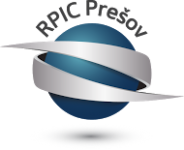Summary:
A Korean R&D institute specialized in ICT Bio-healthcare has developed a technology on reconstructing a 3D (three-dimensional) skeleton model of a patient’s lower limb part with two X-ray images scanned vertically. It is safer, cheaper than conventional 3D modeling based on CT (Computed Tomography) and MRI (Magnetic Resonance Imaging). Companies or research centres can be a potential partner under technical cooperation and research cooperation agreement.
Description:
In orthopedics field, 3D (three-dimensional) skeleton modeling is highly useful for improving the accuracy of disease diagnosis, mapping out the customized surgery plans or producing educational simulation programs.
It is common to configure a 3D skeleton modeling based on data obtained from CT/MRI (Computed Tomography/Magnetic Resonance Imaging), but it is costly to obtain data, time consuming to capture the images and risky to face various hazard such as radiation exposure. In particular, MRI produces inaccurate data for the human skeleton which is the problem.
A Korean R&D institute focusing on ICT Bio-healthcare has developed a technology for modeling lower limb 3D bone based on biplanar X-ray.
The technology is to construct a detailed 3D skeleton modeling of lower limb (femur, shinbone, and splint bone) through optimizing SSM (Statistical Shape Models) after matching the initial 3D model by appointing feature point using two X-ray images scanned vertically. Additionally, the technology scans the images in the stand position, thereby more accurately modeling the space between bones, an important factor to determine joint disorders. Plus, it is cheaper than CT or MRI based 3D modeling and less risky in danger of radiation exposure.
Any companies or research institutes, interested in diagnostic assistance systems, educational services of orthopedics area, can employ this technology to advance their service more accurate, cheaper, and safer. Also, the Korean R&D institute is interested in applying joint R&D programme(e.g. EUREKA, EUROSTARS) to develop new orthopedic diagnostic assistance system or healthcare system.
Type (e.g. company, R&D institution…), field of industry and Role of Partner Sought:
- Type of partner sought: SMEs or research institute
- Specific area of activity of the partner: Diagnostic assistance system developer and educational service provider related to Orthopedics
- Task to be performed: Employing the technology to advance partner’s diagnostic assistance system and educational service more accurate, cheaper, and safer. Applying to joint R&D programme(e.g. EUREKA, EUROSTARS) to explore new orthopedic diagnostic assistance system or healthcare system.
Stage of Development:
Prototype available for demonstration
IPR Status:
Secret Know-how,Patents granted
Comments Regarding IPR Status:
Patent publicized in USA and South Korea
External code:
TOKR20201229002








